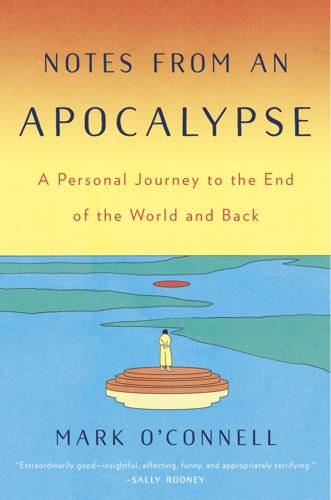
Notes From an Apocalypse: A Personal Journey to the End of the World and Back
by
Mark O'Connell
Published 13 Apr 2020
But the company found itself in something of a double bind in this regard, he explained, on account of the proliferation in recent years of rival outfits offering trips to the Zone. If they didn’t take customers into the buildings—up the stairways to the rooftops, into the former homes and workplaces and schoolrooms of the citizens of Pripyat—some other tour company would, and what people wanted more than anything in visiting Pripyat was to enter the intimate spaces of an abandoned world. One of the Swedish men who accounted for about a third of the group’s number asked whether any visitors to Pripyat had been seriously injured or killed while exploring the abandoned buildings. “Not yet,” said Igor, a reply more ominous than he may have intended. He went on to clarify that the fate of the small but thriving tourism business hung in the balance and depended, by general consensus, on the nationality of the first person to be injured or killed on a tour.
…
There were then some low-budget music videos, all of which featured more or less similar scenes of dour young men—a touchingly earnest British rapper, some kind of American Christian metal outfit—lip-synching against the ruined spectacle of Pripyat. I wondered what, if anything, the tour company’s intention might have been in showing us all this content. Screening the documentary made sense, in that it was straightforwardly informative—the circumstances of the accident, the staggering magnitude of the cleanup operation, the inconceivable timescale of the aftereffects, and so on. But the Top Gear scenes and the music videos were much more unsettling to watch, because they laid bare the ease with which the Zone, and in particular the evacuated city of Pripyat, could be used, in fact exploited, as the setting for a kind of perverse adventurism, as a deep source of dramatic, and at the same time entirely generic, apocalyptic imagery.
…
There seemed to be a general implicit agreement that nobody would appear in anyone else’s shots, due to a mutual interest in the photographic representation of Pripyat as a maximally desolate place, an impression that would inevitably be compromised by the presence of other tourists taking photos in the backgrounds of one’s own. On a whim, I opened up Instagram on my phone—the 3G coverage in the Zone had, against all expectation, been so far uniformly excellent—and entered “Pripyat” into the search box, and then scrolled through a cascading plenitude of aesthetically uniform photos of the Ferris wheel, the bumper cars, the swingboats, along with a great many photos employing these as dramatic backgrounds for selfies.
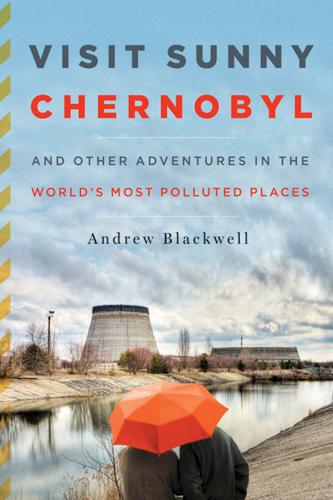
Visit Sunny Chernobyl: And Other Adventures in the World's Most Polluted Places
by
Andrew Blackwell
Published 22 May 2012
The sign at the checkpoint read PRIPYAT. Even more than the reactor itself, Pripyat is the centerpiece of any day trip to the Exclusion Zone. Before 1986, it was a city of nearly fifty thousand people, devoted almost entirely to running the four nuclear reactors that sat just down the road and to building the additional reactors that were to be added to the complex. At the time of the meltdown, Reactors Nos. 5 and 6 were nearing completion, and a further six reactors were planned, making the neighborhood a one-stop shop for the area’s nuclear energy needs. It didn’t take long for the residents of Pripyat to realize there had been an accident.
…
Ultimately, more than three hundred thousand were displaced. Pripyat sat empty. In the months and years following the evacuation, it was looted and vandalized by people who were obviously unconcerned by the radioactive nature of their spoils, whether televisions for their own use or metal items to be sold as scrap. The evacuation and the looting turned Pripyat into what it is today: the world’s most genuinely post-apocalyptic city. In spite of what you might have seen in the movies, though, things can actually be pretty nice after an apocalypse—if a bit scarce in terms of human beings. The road that led us into Pripyat from the south was lined with bushes speckled with small white blossoms, the air thick with the smell of flowers.
…
Laughing at a comment from Nikolai, Dennis pointed to the vapor curling off the asphalt. “We’re joking that now you can see the radiation,” he said. At Dennis’s direction, Nikolai veered left and we catapulted up a gradual slope and onto a long, deserted bridge that spanned the river. This was the Pripyat River, which runs right past Pripyat and the Chernobyl reactor, and into which the cooling channel from the nuclear reactor drains. The Pripyat also empties into the Dnieper River, which runs through Kiev and is the backbone of Ukraine’s most important watershed. You might call it the Ukrainian Mississippi, except there hasn’t been a meltdown in Minneapolis yet. Dennis had made this stop, I think, as a concession to my pleas for a tour of the zone’s “nice spots.”
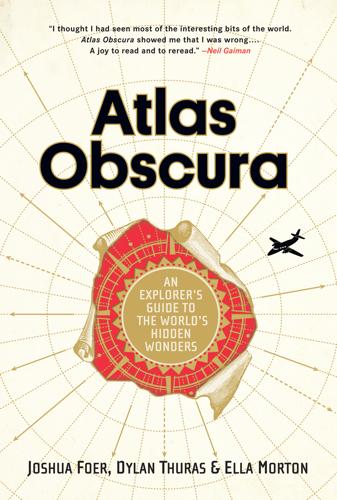
Atlas Obscura: An Explorer's Guide to the World's Hidden Wonders
by
Joshua Foer
,
Dylan Thuras
and
Ella Morton
Published 19 Sep 2016
Andreevsky Spusk, 2-B, Kiev. The nearest subway station is Kontraktova Ploshcha. 50.450100 30.523400 Pripyat PRIPYAT, KIEV OBLAST Pripyat’s clocks all read 11:55. That’s the moment when, on April 26, 1986, the electricity was cut following a meltdown at the Chernobyl nuclear reactor. A day later, Pripyat residents received the following evacuation announcement: For the attention of the residents of Pripyat! The city council informs you that due to the accident at Chernobyl Power Station in the city of Pripyat, the radioactive conditions in the vicinity are deteriorating … Comrades, leaving your residences temporarily, please make sure you have turned the lights, electrical equipment, and water off, and shut the windows.
…
Visitors are free to take photographs, view the reactor from a distance of 100 meters, and even talk to the few remaining residents of Pripyat who disobeyed orders after the blast and returned to their radiation-contaminated homes. In the 30 years since Pripyat was abandoned, plants and animals have begun to thrive despite the high levels of radioactivity. Tree roots burst through concrete floors, forests encroach on the roads, and animals, such as beavers, boars, wolves, and bears, long vanished from the area, have returned. Free of human influence, the area has a much greater biodiversity than it did before the disaster. Guided tours are available and depart by bus from Kiev. 51.405556 30.056944 Pripyat’s creaky Ferris wheel has been still since the Chernobyl meltdown caused the town to be abandoned in 1986.
…
Please keep calm and orderly in the process of this short-term evacuation. Today Pripyat is a city of abandoned buildings with paint peeling away from the walls, falling in flakes onto dusty shoes, toys, and Communist propaganda posters. Outside the crumbling City Center Gymnasium, a rusting Ferris wheel sits beside a jumble of bumper cars. They are the lone remains of a carnival that was due to open on May 1, 1986. This somber, silent city seems an unlikely vacation spot, but it is possible to tour the Chernobyl area. A government-issued day pass is obtainable in Kiev. It is deemed safe to walk around Pripyat for only a few hours at a time, and several precautions must be followed to avoid contamination.
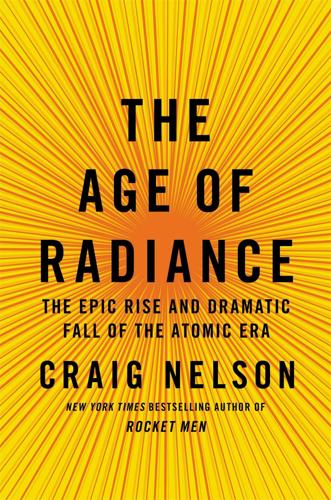
The Age of Radiance: The Epic Rise and Dramatic Fall of the Atomic Era
by
Craig Nelson
Published 25 Mar 2014
Like the topographically similar American Midwest of Iowa, Nebraska, and the Dakotas, this territory was once a great sea, and dog-day temperatures can reach 113 degrees. In 1970, on the banks of the Pripyat River sixty miles north of Kiev, the Soviets began what was planned as Europe’s greatest nuclear energy generator—the V. I. Lenin Atomic Power Station. By 1986, they had four thousand-megawatt reactors burning day and night, with two more under construction and two more being planned. At the same time, Moscow built a new concrete metropolis, Pripyat, home to fifty thousand. The town and its energy complex were all that communism was supposed to achieve: grand, spacious, powerful, yet at the same time gemütlich. Pripyat was notable for having no shortages: plenty of roses, shoes from Czechoslovakia, and enough energy from its plant to provide for itself as well as 2 million residents of Kiev.
…
Some fifty tons of nuclear fuel and eight hundred tons of reactor graphite remained in the reactor vault, where it formed a pit reminiscent of a volcanic crater.” The air, ionized, glowed in a purple haze, radiance visible, evolving to a neon pink so vibrant and so vast that everyone in Chernobyl and Pripyat came out of their homes to watch. “I can still see the bright crimson glow, it was like the reactor was glowing. This wasn’t any ordinary fire, it was some kind of emanation,” Nadezhda Vygovskaya said. “It was pretty. I’ve never seen anything like it in the movies. We were on the ninth floor, we had a great view.
…
Two hours after the Lenin Atomic Station blew up, Moscow received a coded signal—“1, 2, 3, 4”—meaning the absolute highest state of emergency. Gorbachev called the Politburo into crisis session, and by Saturday noon a fact-finding team of doctors, physicists, and government officials were flying to Kiev and being ZIL-limousined to Pripyat. The group report mentions “a white pillar several hundred meters high” of fire and smoke marked by “individual spots of deep crimson luminescence . . . of burning products constantly flying from the crater of the reactor” and local officials who had no idea what they were supposed to do in such a catastrophe, as “they had no guidelines written earlier and were incapable of making any decisions on the spot.”
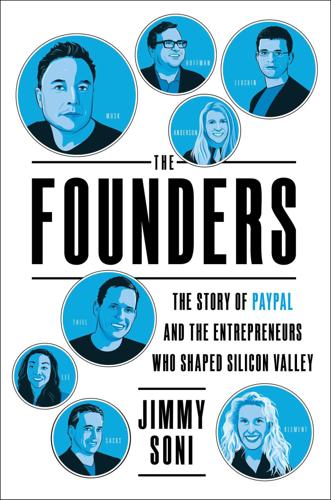
The Founders: The Story of Paypal and the Entrepreneurs Who Shaped Silicon Valley
by
Jimmy Soni
Published 22 Feb 2022
It’s fitting, then, that PayPal’s story starts with an historic technological breakdown—a disaster thousands of miles from Silicon Valley that exposed a future PayPal founder to computer technology for the first time. PART 1 SICILIAN DEFENSE 1 BUILDING BLOCKS The February 1986 issue of Soviet Life included the ten-page glossy spread: “Peace and Plenty in Pripyat.” Pripyat was, per the article, a cosmopolitan idyll. “Today the town is made up of people belonging to more than 30 different nationalities from all over the Soviet Union,” the authors wrote. “The streets abound in flowers. The blocks of apartments stand in pine groves. Each residential area has a school, a library, shops, sports facilities, and playgrounds close by.
…
In the morning there are fewer people around. Only young women pushing baby carriages stroll along unhurriedly.” If the town had any problems at all, it was only that it lacked sufficient space for new arrivals. “Pripyat is currently experiencing a baby boom,” the mayor observed. “We’ve built scores of day-care centers and nursery schools, and more are on the way, but they still can’t cope with the demand.” The demand was understandable, because Pripyat was home to a Soviet technological marvel: the Chernobyl nuclear power plant. The plant was a significant employer, and, per the article, it provided good-paying jobs and energy that was “ecologically much cleaner than thermal plants that burn huge quantities of fossil fuel.”
…
A Soviet minister was asked directly about this matter, and he replied with all the confidence and assuredness of officialdom. “The odds of a meltdown,” he boasted, “are one in 10,000 years.” Just months after Soviet Life gushed about Pripyat living, of course, the town was left a smoldering, radioactive ruin. At 1:23 a.m. on April 26, 1986, the number 4 reactor at the Chernobyl nuclear power plant melted down, causing an explosion that ripped the building’s thousand-ton roof clean off. Soon, Pripyat’s skies pulsed with more than four hundred times the radioactive material dropped on Hiroshima. Maksymilian “Max” Rafailovych Levchin was ten years old, and he was sleeping ninety miles away when Chernobyl exploded.
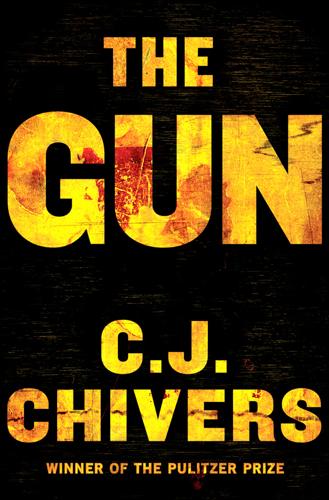
The Gun
by
C. J. Chivers
Published 12 Oct 2010
All male Soviet students were expected to perform these tasks, along with learning the rudiments of marching, civil defense, and first aid.25 Even students from the most privileged families participated. The program could be seen in Pripyat, founded in 1970 to support the Nuclear Power Station in the Name of Vladimir I. Lenin, which had been constructed at Chernobyl. Its citizens were selected from accomplished families. Theirs was to be a model city, brick-and-mortar testimony to Soviet progress and the atom’s peaceful use. In Pripyat as elsewhere, the AKM was as surely a part of the curriculum as Lenin, Pushkin, and the periodic table. In one set of evaluations, held at School No. 1 on April 10 and 11, 1986, the tenth-grade boys, most of them sixteen years old, were timed assembling and disassembling their school’s assault rifles.
…
Sergei Svirnov performed the chore in twenty-four seconds. Sergey Salih was the best of all, completing the task in twenty-two seconds. His hands must have been a blur. Even the laggard, Oleg Bryukhanon, was capable. He needed seventy-five seconds—and that was the slowest of all.26 Two weeks later, the dream of Pripyat came to ruin. Reactor No. 4 exploded, bombarding Pripyat with radiation. Families were evacuated in an apocalyptic panic while the Kremlin pretended all was well. The evacuees left behind a world in freeze-frame—contaminated, sealed from intrusion, stopped in time. The abandoned city and its records, including I. D. Peshko’s military preparation files, became an exhibit of the Soviet experience everywhere.
…
At Ap Sieu Quan, when at least forty of Hotel Company’s M-16s jammed, the M-14s allowed the grunts who had them to protect Marines whose rifles had gone silent. (Photos courtesy of Claude Elrod) THE TEENAGERS’ WEAPON The 1986 log book of preconscription training of Soviet students in Pripyat, the worker’s town beside the nuclear reactors at Chernobyl. The book was left behind after the power station exploded, bombarding Pripyat with radiation, and remained on the contaminated grounds in 2005. Results of the students’ timed drills with Kalashnikov assault rifles—part of the curriculum in Soviet schools. The log book was a marker of both the rifles’s ease of use and the extent to which assault rifles had penetrated Soviet society.

Atomic Accidents: A History of Nuclear Meltdowns and Disasters: From the Ozark Mountains to Fukushima
by
James Mahaffey
Published 15 Feb 2015
The mechanical engineers who designed the plant were good at anticipating bad welds but gave insufficient thought to what happens when a reactor runs away. Chernobyl is an ancient town in the Byelorussian-Ukrainian woodlands on the banks of the Pripyat River, where the land is a featureless steppe. It is at least 1,000 years old, and was most memorable for providing Prince Svyatoslav the First with a particularly spirited, almost feral bride around the year 963. In the 1970s, work began on a cluster of six RBMK-1000 reactors, built on a flat spot 11 miles northwest of the town. A new, modern village, Pripyat, rose up 1.9 miles west of the sprawling plant, just outside the safety zone. Its population grew quickly to 50,000 people.
…
The helicopters had to be abandoned at a landing site, and the men had to go to Moscow for radiation-poisoning treatment. The accident was still a state secret, and no alerts were issued to anyone who was not in the immediate area. The entire town of Pripyat had to be evacuated, population 50,000. Buses lined up for as far as the eye could see, and residents were told to bring just a toothbrush and a change of clothes. “It will only be for a few days,” they lied, “so don’t pack up your belongings.” Everyone had to be relocated, never to see Pripyat again. In all, 135,000 people were evacuated from the area, and it had to be fenced off. The next morning, early on April 27, nuclear engineer Cliff Robinson was walking down the hallway to his office at the Forsmark Nuclear Power Station, a triple BWR plant near Uppsala, Sweden.
…
King My seventh-grade English teacher, who thought I should write Contents Author’s Note: A Triumph of Soviet Technology Introduction: Bill Crush and the Hazards of Steam Under Pressure Chapter 1: We Discover Fire Chapter 2: World War II, and Danger Beyond Comprehension Chapter 3: A Bit of Trouble in the Great White North Chapter 4: Birthing Pains in Idaho Chapter 5: Making Everything Else Seem Insignificant in the UK Chapter 6: In Nuclear Research, Even the Goof-ups are Fascinating Chapter 7: The Atomic Man and Lessons in Fuel Processing Chapter 8: The Military Almost Never Lost a Nuclear Weapon Chapter 9: The China Syndrome Plays in Harrisburg and Pripyat Chapter 10: Tragedy at Fukushima Daiichi Chapter 11: Caught in the Rickover Trap Image Gallery Bibliography Index Illustration Credits Acknowledgments AUTHOR’S NOTE A TRIUMPH OF SOVIET TECHNOLOGY Nuclear engineers love and admire hydroelectric power. It’s perfectly clean.
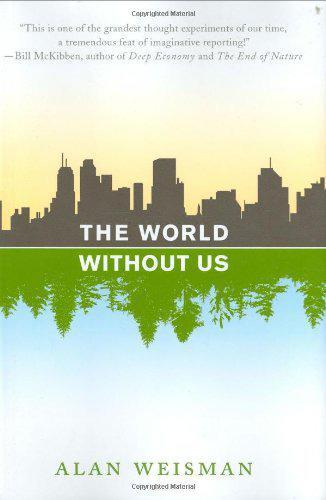
The World Without Us
by
Alan Weisman
Published 5 Aug 2008
Dikes have slowed radioactive water, but not stopped it from reaching the nearby Pripyat River and, farther downstream, Kiev’s drinking supply. A railroad bridge leading to Pripyat, the company town where 50,000 were evacuated—some not quickly enough to keep radioactive iodine from ruining their thyroids—is still too hot to cross. Four miles south, though, you can stand above the river in one of the best birding areas today in Europe, watching marsh hawks, black terns, wagtails, golden and white-tailed eagles, and rare black storks sail past dead cooling towers. In Pripyat, an unlovely cluster of concrete 1970s high-rises, returning poplars, purple asters, and lilacs have split the pavement and invaded buildings.
…
See Białowiea Puszcza Beqaa Valley (Lebanon), 42 Berry, Chuck, 251 Bessemer, Henry, 246 Bethge, Hans, ix BHP Billiton Diamonds, 219–20 Białowiea Puszcza (Poland/Belarus), 9–10, 10, 11, 12–13, 13–14, 21, 217, 247, 261 partition of, 13 bighorn sheep without humans, 235 birds Attwater’s prairie chickens, 140–41 automobile traffic and, 196 cats and, 197–98 DDT, 74, 129, 159, 196 insecticides and, 74 extinctions, 63, 191–92, 192–93, 193, 199 high-tension power lines and, 193–94 humans and, 63, 191–92, 192–93, 193, 198–200 island dwellers, 200 migrations, 198–99 nonnative invaders, 29–30 plate glass picture windows and, 196–97 raptors, resurgence of, 28, 34 radiation and, 214–16 radio-transmission towers and, 193–94 red-crowned cranes, 186–87 without humans, 191–92, 199, 235 black rhinos poaching of, 72 without humans, 235 Blitzkrieg theory, 58–63, 271–72 Blue Mosque (Istanbul, Turkey), 103 Bobiec, Andrzej, 12, 13 Borglum, Gutzon, 181 Bostrom, Nick, 240–41, 243–44 BP, 135 accident at, 136 EPA and, 138 Brazos de Dios River (TX), 134, 135, 142, 143 Briffa, Peter, 24–26 bronze sculpture, 245–47 melted for weaponry, 247 Browne, Mark, 114, 117–18 Çakmut, Abdülhamit, 270–71 Cappadocia history, 108–9 Mount Hasan Da, 106–7 underground city, 106, 108–9, 109, 109–11 carbon dioxide (CO2), 39–40, 40–42, 267 and burning coal, 222–23 sequestering, 223 carbonic acid, 40–41 Carnegie Desert Botanical Laboratory (AZ), 55 Cassava, 2–3 cast iron deterioration of, 18 Çatal Höyük, 106 cattle, 65 Maasai people and, 82–83, 84–86 cats population of, 197–98 as predators, 197–98 survival of, 37 Cavinder, Allan, 91–92, 93–95 Cental Park (NYC), 22–24 animal life, 36–37 coyotes in, 33–34, 36 nonnative invaders, 30, 30–31, 30–31 Shakespeare Garden, 30 statue of Waładyslaw Jagiełło, 21–22, 247 CCZ (Civilian Control Zone, Korea), 183 wildlife, 188 cement deterioration of, 19–20 CFCs (chlorofluorocarbons), 204–5 Chambura Gorge, 47–49 Chang-Hee, Ahn, 183 Changes in the Land (Cronon), 147 Chauvet-Pont-d’Arc (France), 101 chemical fertilizer, 74 chemical weapons Rocky Mountain Arsenal (CO), 207–8 chemicals DDT, 74, 129, 159, 196 Dieldrin, 74 EDCs (endocrine-disrupting chemicals), 124 insecticides, 74 PCBs (polychlorinated biphenyls), 125–26, 156, 159, 267 and plant life, 29, 31 See also petrochemicals; plastics; soil Chernobyl (Russia), 214–16, 217, 267 Pripyat, 216 wildlife, 217–18 Zone of Alienation, 215, 218 Chesser, Ronald, 217 chicha, 1, 2–3 Chile Clovis people in, 60 chimpanzees (Pan troglodytes), 45, 47–48 and AIDS, 86–87 bonobos, 50–51 Pan prior, 46–47, 49 China scrap iron and, 133 Chinese ailanthus tree, 26–27, 29, 32 Chinese tallow tree, 140–41, 143–44 Chocolate Bayou (TX), 136, 139 Church of Euthanasia, 242 Citizen Cyborg: Why Democratic Societies Must Respond to the Redesigned Human of the Future (Hughes), 224 Clark, William, 54 Clovis people, 197 and animal extinctions, 58–60 megafauna, hunting, 61–64, 80 coal mountaintop removal, 221–23 clean, 222 Cohen, Andy, 43 Coleman, John, 197–98 Colinvaux, Paul, 257 Colonial Pipeline, 132–33 Columbus, Christopher, 71, 259 Constantia Hotel (Varosha, Cyprus), 91 See also Palm Beach Hotel Cook, Captain James, 28, 112 copper and corrosion, 245, 246, 246–47, 248 coyotes in Central Park, 33–34, 36 success of, 150 Cro-Magnons, 101 Cronon, William, 147 Crosby, Alfred, 29 Cuevas, Johnny, 177–79, 180 cultural objects ceramics, 247 museums and museum vaults, durability of, 37 survival of, 245–47, 247–48 textiles, 247 Cyprus, 92–93 archeological discoveries, 98–99, 101 developers and, 99–100 ethnic hatred, 92, 98 Greek/Turkish partition, 91–92, 92–93, 96, 99 Greek Republic of Cyprus, 96 history, 97–98, 98 trees of, 97–98 Turkish Republic of Northern Cyprus, 96,99 wildlife, 97 without humans, 100–101 See also Varosha Dalai Lama, 270 Dartmoor (U.K.), 166–67 Darwin, Charles, 28, 46, 55, 112, 200 Das lied von der Erde (Mahler), ix DDT, 74, 129, 159, 196 Dead Sea, 42 Del Tufo, Jerry, 33–36 Demarest, Arthur, 224, 225, 228–29 Derinkuyu (Cappadocia, Turkey), 109, 110–11 Desert Laboratory, 55, 57, 65 desiccation, 238 Detwiler, Kate, 45–46 Dieldrin (pesticide), 74 DMZ (Demilitarized Zone, Korea), 183–85, 185–88 wildlife, 184–85, 186–87, 188–90, 191 dodo extinction of, 191–92 dogs survival of, 37 without humans, 235 Dos Pilas (Mayan site), 226, 227–28 Dow, 135 Doyle, Arthur Conan, 166 Drake, Sir Francis, 112 Drake, Frank, 249, 251, 252, 253–54 radio greeting to space, paranoia and, 253 Ducks Unlimited, 192–93 Dyke, George Vaughn, 153 E.C.
…
See Cyprus Turkey ozone destruction of, 204–5 oxygen-ozone, 204—5 ultraviolet rays, 203–4 PAHs (polyaromatic hydrocarbons), 156, 165, 267 paleolithic humans in Africa, 68–71 and slash-and-burn agriculture, 167–68 toolmakers, 68–69 Paleozoic Era, end of, 230 Palm Beach Hotel (Varosha, Cyprus), 91–92, 93–95 See also Constantia Hotel Palmyra Atoll (Line Islands), 264–65 as munitions dump, 258–59 Palo Verde Nuclear Generating Station (AZ), 209–11, 212, 213 Panama Canal, 173–75, 177–79, 178 Culebra Cut, 176–77 electricity and, 175, 177 engineering and building, 175–77 Lake Gatún, 176, 177, 179–80 Lake Alajuela, 177 Madden Dam, 177, 179 Río Chagres, 175–76, 177–79 and wildlife, 199–200 without humans, 176–77, 178–70 Panama City, 179 paper, survival of, 248 pavement deterioration of, 26–27 Pazar, Michael, 238 PCBs (polychlorinated biphenyls), 125–26, 156, 267 and hermaphroditic polar bears, 159 Pérez, Abdiel, 175–77 permafrost thaw of, 219–20, 220–21 methane deposits, 220–21 Permian Extinction, 229–31 Peters, Chuck, 29, 32 Petexbatún (Mayan kingdom), 226, 227–28 petrochemical industry accidents, 136, 138–40 Houston and, 132–33 storage, 135–36 petrochemicals butadiene, 132 styrene, 132 synthetic rubber, 131–32 See also chemicals; petroleum; plastics; polymer petroleum BP, 135 pipelines, 132–33 and plant life, 31 salt dome storage caverns, 133 synthetic rubber, 131–32 Valero, 135, 136 plant life extreme conditions, tolerance to, 159–60 genetic modification, 159, 160–62 Ice Age and, 61–62 nonnative invaders, 29–30, 30–31, 32 threats to, 29 plant resurgence in New York City, 27, 27–28 in Chernobyl, 215–56 plaster walls deterioration of, 18 plastic Bakelite, 115, 118, 237 biodegradation of, 17–18, 18, 125–26, 127–28 consumption after 1945, 118–19 ecological damage from, 119–20 natural polymers, 118 particles polluting the oceans, 1 13–14, 114–16, 116–18, 118–19, 119–20, 120–23, 123–24, 124–25, 125–26, 126–28 photodegradation of, 126 Styrofoam, 118, 131 See also polymer plastic bags ecological damage from, 116–17 plastic particles polluting the oceans, 113–14, 114–16, 116–18, 118–19, 119–20, 120–23, 123–24, 124–25, 125–26, 126–28, 264 sources of, 116–17 Pliny, 247 plutonium, 202 Chernobyl, 214–15 half-life, 202 Plym River (U.K.), 112, 113 Plymouth (U.K.), 112–13 World War II, 112 Poland Białowieza Puszcza, 9–10, 10, 11, 12–13, 13–14, 217 and World War II, 22 polymer Bakelite, 115, 118, 237 biodegradation of, 17–18, 18, 125–26, 127–28 consumption after 1945, 118–19 ecological damage from, 119–20 natural polymers, 118 particles polluting the oceans, 113–14, 114–16, 116–18, 118–19, 119–20, 120–23, 123–24, 124–25, 125–26, 126–28 photodegradation of, 126 rubber, 130–32 Styrofoam, 118, 131 See also plastic; plastic particles POPs (persistent organic pollutants), 159, 165 population, 271–72 control of, 272–73 Portland cement, 175 Potts, Rick, 70 Poulton, Paul, 162–64 primates and monkeys, 45–46, 47–48, 50–51 and AIDS, 86–87 primates baboons, 87 chimpanzees, 45, 46–47, 47–48, 50–51 gorillas, 51 spider monkeys, 3 Pripyat (Russia), 216 Rackham, Oliver, 150–51 radio-transmission towers danger to birds, 193–94 radio waves, 274 radiation, 36, 202–3 birds, effect on, 214–16 genetic mutations, 217, 217–18 meltdowns, 212–13, 213–14, 214–16 ultraviolet rays, 203–4 at various weapons sites, 207–8, 208–9 See also Chernobyl, nuclear fission; plutonium; uranium radiation waste, 202–3 hazard to animals, 209 storage of, 206–8, 208–9 vitrification, 208 Rathje, William, 119–20 reactors, 36, 209–11, 212, 213, 212–13, 213–14, 214–16 meltdowns, 212–13, 213–14, 214–16 red-crowned cranes, 186–87 Rewilding Institute, 271 rhinos.
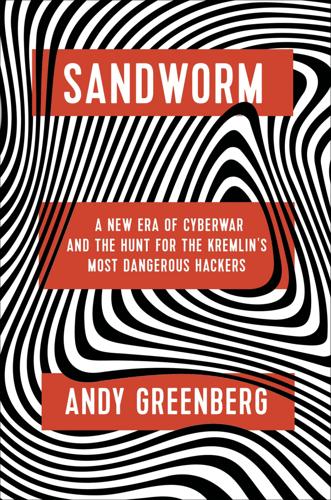
Sandworm: A New Era of Cyberwar and the Hunt for the Kremlin's Most Dangerous Hackers
by
Andy Greenberg
Published 5 Nov 2019
The 1980s and the rise of Gorbachev would lay the groundwork, after eight hundred years, for Ukrainian independence. But not before giving Ukraine one more lasting keepsake of its Soviet rule. * * * ■ On the night of April 25, 1986, engineers were conducting a test at the Chernobyl nuclear plant near the northern Ukrainian town of Pripyat, population fifty thousand. The experiment was designed to check how long the reactor would continue to function in the case of a total electric failure. Just after midnight, operators turned off the system that would cool the reactor core with water in the case of an emergency and initiated a power shutdown.
…
But at 1:23 a.m., a massive eruption—perhaps caused by a sudden buildup of steam or perhaps a nuclear explosion that subsequently triggered that steam blowup—tore through the plant, rupturing the reactor core and killing two engineers. A jet of radioactive material immediately shot more than three thousand feet in the air. Firemen rushed to the scene to extinguish the plant’s burning roofs, many unwittingly receiving fatal doses of radioactivity. But no public warning went out to the citizens of nearby Pripyat, where people went about their Saturday routines unaware of the nuclear fallout spewing from the meltdown just a few miles down the river. Only thirty-six hours later did Communist Party officials enact a limited evacuation, starting with just a small area of a few miles around the plant. In fact, a radioactive plume was already spreading through the atmosphere that would reach as far as Sweden, with an invisible toll on the health of its victims that still eludes measurement.
…
The train passed through forty miles of landscape that had seen no human influence in more than three decades. Trees and grass grew as tall and wild as they had in a prehistoric era. From his train window, he saw deer and flocks of birds, all of which seemed to prefer the radioactive remnants of humans’ civilization to humanity’s presence. Finally the train crossed the Pripyat River and arrived at a station that served only one destination: the cleanup site for the Chernobyl nuclear reactor. At the station, Honcharov put on his blue uniform and boarded a bus that took him to the building where he worked in the sprawling Chernobyl complex, with a footprint larger than a dozen football fields.
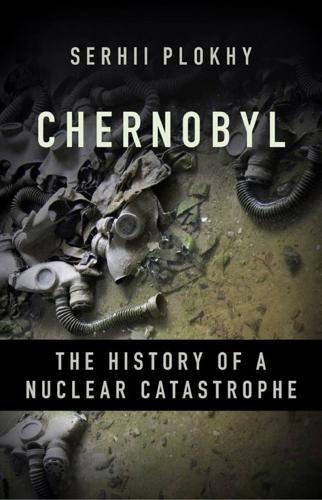
Chernobyl: The History of a Nuclear Catastrophe
by
Serhii Plokhy
Published 1 Mar 2018
Zhores Medvedev, The Legacy of Chernobyl (New York, 1990), 178. 7. Valerii Legasov, “Ob avarii na Chernobyl’skoi AĖS,” tape no. 1, Elektronnaluia biblioteka RoyalLib.Com, http://royallib.com/read/legasov_valeriy/ob_avarii_na_chernobilskoy_aes.html#0; Valentyn Fedulenko, “22 goda Chernobyl’skoi katastrofe,” Pripyat.com, http://pripyat.com/articles/22-goda-chernobylskoi-katastrofe-memuary-uchastnika-i-mnenie-eksperta-chast-1.html. 8. Fedulenko, “22 goda Chernobyl’skoi katastrofe”; Valentin Zhil’tsov, in Iurii Shcherbak, Chernobyl’: Dokumental’noe povestvovanie (Moscow, 1991), 181–186. 9. “Iz rabochei zapisi zasedaniia Politbiuro TsK KPSS, April 28, 1986,” in R.
…
Chernobyl’skaia atomnaia ėlektrostantsiia, 13. 20. Ivan Shchegolev, “Ėtalonnyi sovetskii gorod: Vospominaniia pripiatchanina,” Ekologiia, April 24, 2009, https://ria.ru/eco/20090424/169157074.html; Artur Shigapov, Chernobyl’, Pripiat’, dalee nigde (Moscow, 2010), http: //royallib.com/read/shigapov_artur/chernobil_pripyat_dalee_nigde.html #20480. 21. “Interv’iu s Viktorom Briukhanovym, byvshim direktorom ChAĖS,” ChAĖS: Zona otchuzhdeniia, http://chernobil.info/?p=5898. 22. Artur Shigapov, Chernobyl’, Pripiat’, dalee nigde; “Interv’iu s Viktorom Briukhanovym; Aleksandr Boliasnyi, “Kogda iskliucheniia chasto povtoriaiutsia, oni stanoviatsia normoi,” Vestnik 7, no. 214 (March 30, 1999), www.vestnik.com/issues/1999/0330/koi/bolyasn.htm. 23.
…
Nikolai Galushko, head of the Ukrainian KGB, to Volodymyr Yavorivsky, head of the Chernobyl Commission of the Ukrainian parliament, “O nekotorykh problemakh likvidatsii posledstvii avarii na Chernobyl’skoi AĖS,” May 23, 1991, 5, Archive SBU, fond 16, op. 1, no. 1129; Volodymyr Iavorivs’kyi, “Usi my zhertvy i vynuvattsi katastrofy,” Oikumena, no. 2 (1991); Volodymyr Iavorivs’kyi, “Pravda Chornobylia: kolo pershe,” Oikumena, no. 5 (1991); Volodymyr Iavorivs’kyi, “Khto zapalyv zoriu Polyn?” Nauka i suspil’stvo, no. 9 (1991). 7. “Briukhanov—menia privezli k mestu predpolagaemogo stroitel’stva,” Pripiat.com, http://pripyat.com/people-and-fates/bryukhanov-menya-privezli-k-mestu-predpolagaemogo-stroitelstva-les-pole-i-snegu-po-. 8. Vladimir Shunevich, “Viktor Briukhanov: Iz partii menia iskliuchili priamo na zasedanii Politbiuro TsK KPSS,” Fakty, July 7, 2012; Anatolii Diatlov, Chernobyl’: Kak ėto bylo (Moscow, 2003), chapter 5. 9.

Explore Everything
by
Bradley Garrett
Published 7 Oct 2013
It really depends on the people you’re working with, and for this reason, I had to construct theories of how to do fieldwork on the fly, in the moment.20 Sometimes these choices backfired, but it’s important that we tie these thoughts into the notion of becoming over being, and process over product, that I have stressed throughout the book and that are outlined geographer David Pinder: The kinds of experimentation that are the hallmark of much creative cultural practice, and their willingness to take risks with different forms, media and performative practices, are significant in this regard, not for laying down a path to be followed, which would be strewn with pitfalls for those lacking training in those fields, but rather for encouraging reflection on modes of presenting, writing and pedagogy … and on the technologies through which cities are made visible as cities.21 It was the combination of what we all did as a group, including our engagement with the media and various police interventions, that made London what it was during that time. EPILOGUE ‘Well, if it were easy, kid, everybody would do it.’ – James Coughlin, The Town If you could go exploring anywhere, in any city, where would you go? You might answer, ‘I’d love to wander around the abandoned nuclear fallout zone around Chernobyl and the Pripyat ghost town’, or ‘I would be interested in walking the sewers in Vienna where they filmed The Third Man.’ Perhaps, standing on Tottenham Court Road in London, you have looked up and thought, ‘I’d like to see the view from the top of Centre Point.’ All of these things are possible. However, each one carries different costs and sets of restrictions based on the physical makeup and the social context of the city.
…
Garrett, Alison Hess, Ellie Miles and Terri Moreau, ‘London’s Olympic Waterscape: Capturing Transition’, International Journal of Heritage Studies 19: 2 (2013). 12 Friedrich Nietzsche, The Use and Abuse of History (New York: Cosimo Classics, 2006), p. 21. 13 Brian Dillon, ‘Decline and Fall’, Freize Magazine 130 (April 2010). 14 Ninjalicious, ‘The End Is Nigh, but I’m Probing On’, Infiltration (1997). 15 Paul Dobraszczyk, ‘Petrified Ruin: Chernobyl, Pripyat and the Death of the City’, City: Analysis of Urban Trends, Culture, Theory, Policy, Action 14: 4 (2010), p. 372; Susan Sontag, ‘The Imagination of Disaster’, in Sean Redmond, Liquid Metal: The Science Fiction Film Reader (New York: Wallflower Press, 2005), p. 52. 16 Dobraszczyk, ‘Petrified Ruin’; Mike Davis, Dead Cities, and Other Tales (New York: New Press, 2004). 17 W.G.
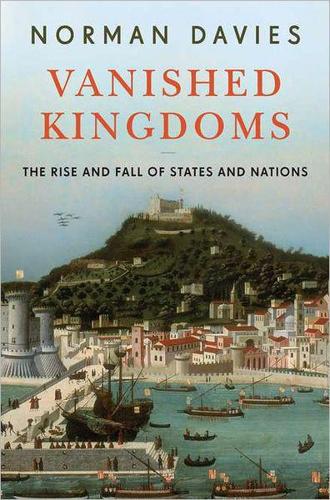
Vanished Kingdoms: The Rise and Fall of States and Nations
by
Norman Davies
Published 30 Sep 2009
Its highest point at Dzyarzhynska Hara or ‘Dzherzhynsky Hill’ reaches a mere 1,132 feet (346 metres). Its main physical axis runs from south-west to north-east across the great European plain and along a section of the continental divide. All the rivers above the divide, the Nyoman (Nieman) and Dvina and their tributaries, flow to the Baltic; all rivers below the divide, like the Pripyat’ and Berezina, flow south towards the Dniepr and the Black Sea. The country’s problems, patently severe, can best be summarized by four ‘I’s – Infrastructure, Image, Irradiation and, above all, Istoriia. As a showpiece of the infrastructure, the Belarusian tourist industry can recommend no hotels in the higher international categories, no scenic routes served by modern roads and service stations, and no holiday resorts.
…
The initial ethnolinguistic mix was made up of Balts, Slavs, Finnics and Germanics. All were pale-skinned, northern Europeans. All except the Finnics spoke languages of Indo-European origin. The territory was bounded in the north-west by the Baltic Sea, in the south by the vast marshland drained by the Pripyat’ – the Pripet Marshes – in the west by the Vistula basin and in the east by the watershed of the upper Volga. In ancient times, indeed until quite recently, rivers bore an importance which is often forgotten. The carriage of people and goods was far easier by water than overland, especially in spring and summer.
…
Between the eleventh and thirteenth centuries, the Principality of Polatsk under the descendants of Rurik governed the ‘Land of the Headwaters’ in north-west Rus’ without serious interference. It was subdivided into five dependent ‘lands’ – Polatsk (Polotsk), Smalensk (Smolensk), Turayˇ (Turov), on the Pripyat’, Chernigayˇ (Chernigov), which bordered Kiev, and Navahrudak (Novogrudok), which bordered Aukštota. At some point, it lost control of Smalensk, whose ruler emerged as an independent prince. Like all the nascent principalities of medieval Europe, it spent much time warring. There were campaigns to the east against Pskov and Novgorod, conflicts to the south with Kiev, and constant skirmishes with the Balts to the north-west.

Vanished Kingdoms: The History of Half-Forgotten Europe
by
Norman Davies
Published 27 Sep 2011
Its highest point at Dzyarzhynska Hara or ‘Dzherzhynsky Hill’ reaches a mere 1,132 feet (346 metres). Its main physical axis runs from south-west to north-east across the great European plain and along a section of the continental divide. All the rivers above the divide, the Nyoman (Nieman) and Dvina and their tributaries, flow to the Baltic; all rivers below the divide, like the Pripyat′ and Berezina, flow south towards the Dniepr and the Black Sea. The country’s problems, patently severe, can best be summarized by four ‘I’s – Infrastructure, Image, Irradiation and, above all, Istoriia. As a showpiece of the infrastructure, the Belarusian tourist industry can recommend no hotels in the higher international categories, no scenic routes served by modern roads and service stations, and no holiday resorts.
…
The initial ethnolinguistic mix was made up of Balts, Slavs, Finnics and Germanics. All were pale-skinned, northern Europeans. All except the Finnics spoke languages of Indo-European origin. The territory was bounded in the north-west by the Baltic Sea, in the south by the vast marshland drained by the Pripyat′ – the Pripet Marshes – in the west by the Vistula basin and in the east by the watershed of the upper Volga. In ancient times, indeed until quite recently, rivers bore an importance which is often forgotten. The carriage of people and goods was far easier by water than overland, especially in spring and summer.
…
Between the eleventh and thirteenth centuries, the Principality of Polatsk under the descendants of Rurik governed the ‘Land of the Headwaters’ in north-west Rus′ without serious interference. It was subdivided into five dependent ‘lands’ – Polatsk (Polotsk), Smalensk (Smolensk), Turaў (Turov), on the Pripyat′, Chernigaў (Chernigov), which bordered Kiev, and Navahrudak (Novogrudok), which bordered Aukštota. At some point, it lost control of Smalensk, whose ruler emerged as an independent prince. Like all the nascent principalities of medieval Europe, it spent much time warring. There were campaigns to the east against Pskov and Novgorod, conflicts to the south with Kiev, and constant skirmishes with the Balts to the north-west.
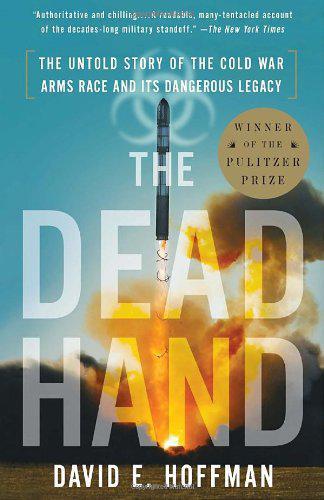
The Dead Hand: The Untold Story of the Cold War Arms Race and Its Dangerous Legacy
by
David Hoffman
Published 1 Jan 2009
Today there is still a chance to stop it, but tomorrow it might be too late." In the marshy flatlands and forests of the Ukraine, spring breezes arrived early that April, carrying scents of cherry blossoms. A giant nuclear electricity-generating plant with a red-and-white candy-striped smokestack stood astride the Pripyat River, ten miles north of the town of Chernobyl and nestled next to a small town, Pripyat. The station housed four 1,000-megawatt reactors, and two more reactors were under construction that, when finished, would make it the largest nuclear power plant in the Soviet Union. In the early-morning hours of Saturday, April 26, a test was getting underway at Reactor No. 4.21 The reactor core was a mammoth block of graphite 23 feet high and 38 feet in diameter, weighing 1,700 tons, honeycombed with 1,661 holes for rods filled with uranium fuel.
…
Firefighters recalled standing on a roof so hot their boots melted; helicopter pilots braved the smoldering ruins to dump 5,020 metric tons of sand and other material in an effort to suffocate what appeared to be a red glow, the burning graphite reactor below.32 But while individuals performed acts of heroism, the bosses of the Soviet state obfuscated. One of the first actions of the plant director was to cut nonessential telephone lines around Chernobyl. 33 An evacuation of Pripyat was begun only thirty-six hours after the explosion; the second stage of the evacuation, including a wider zone that eventually displaced 116,000 people, did not begin until May 5. The Communist Party in Ukraine insisted that May Day parades should carry on as usual in Kiev even though winds were blowing in that direction.
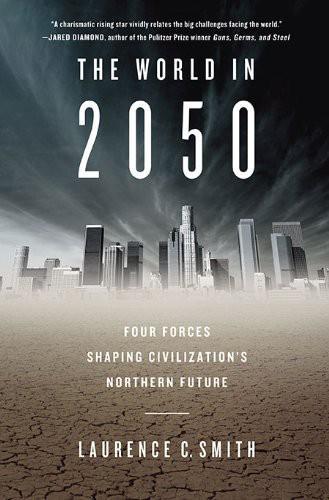
The World in 2050: Four Forces Shaping Civilization's Northern Future
by
Laurence C. Smith
Published 22 Sep 2010
It took eighteen days for then-general secretary Mikhail Gorbachev to acknowledge the disaster on Soviet television, but he had already mobilized a massive response. Soviet helicopters dropped more than five thousand tons of sand, clay, lead, and other materials on the reactor’s burning core to smother the flames. Approximately 50,000 residents were evacuated from the nearby town of Pripyat, still abandoned today with many personal belongings lying where they were left. Some 116,000 people were relocated in 1986, followed by a further 220,000 in subsequent years. Approximately 350,000 emergency workers came to Chernobyl in 1986-87, and ultimately 600,000 were involved with the containment effort.
…
Pasqualetti, Martin Patrushev, Nikolai Pearce, Fred permafrost: and carbon storage; and climate change; continuous permafrost; and glaciers; and global warming and lake formation; and load bearing capacity; and U.S. policy photovoltaics Pika, Aleksandr plant biomass plug-in electric cars Poland polar bears politics: and Arctic resources; and Arctic transportation; and ethanol subsidies; and expert political judgment; and global warming; and human settlement; and inertia of global forces; and the North Pole; and oil supplies The Population Bomb (Ehrlich) population growth. See demography; specific countries Portugal Powell, James Lawrence Primorsky Territory Prince Edward Island Pripyat, Ukraine protectionism Prudhoe Bay Putin, Vladimir Qatar Quantification Settlement Agreement Québec Queen Elizabeth Island radiation railroads rain forests rainfall Reagan, Ronald RechargeIt initiative regional corporations renewable energy resources. See also specific energy types Republic of Korea reserve-to-production ratios reservoirs resource demand.
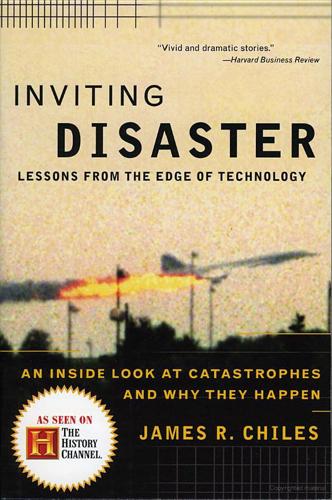
Inviting Disaster
by
James R. Chiles
Published 7 Jul 2008
Lights banish the shadows, and walls muffle the noise. This appeared to be the situation shortly after midnight on April 26, 1986, when a small crowd of engineers, technicians, and foremen occupied the control room at the V. I. Lenin Chernobyl power station, Reactor 4. The reactor complex was on the edge of the Pripyat River, eighty miles north of Kiev. The crew was attempting to carry out an experiment during a short transition period as the reactor came off line and coasted to a shutdown for its annual maintenance work. The goal was to squeeze enough electrical power out of a reactor-generator set during an emergency shutdown to give time for diesel generators to come on line to pick up the power loads.
…
Booster hinged around remaining upper struts, crashing into external tank. Tank failure threw orbiter sideways into supersonic slipstream, breaking it apart. Any survivors in crew compartment died on impact with water. Deaths: 7. V. I. Lenin Chernobyl Nuclear Power Station, Reactor 4: explosions Near Pripyat, Ukraine, Russia April 26, 1986 Crew was under orders during scheduled shutdown to measure how long residual energy could produce electricity after nuclear reaction was stopped. Crew continued, though reactor proved unstable at low power. When operators tried to use control rods, graphite tips of rods displaced water from channels and brought power level to 100 times maximum allowed, causing two explosions.
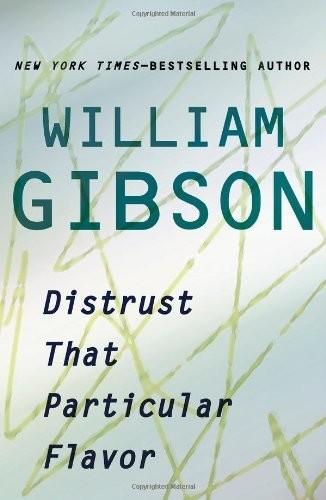
Distrust That Particular Flavor
by
William Gibson
Published 3 Jan 2012
I think of the line of dawn rushing through desert, causing stones to explode. It is almost more than I can bear to contemplate, though the images themselves are so gorgeous, so extraordinary, that of course I look and look. These images truly are, in that particular coinage of J. G. Ballard’s, terminal documents. One might compare them to Robert Polidori’s images of Pripyat and Chernobyl, except that what Girard reveals is so much more possibly the fate of so many places, hence so much more terrible. I go back to the box, look again, and again am struck silent. “Pictures or it didn’t happen,” they say on the Internet. One of Greg Girard’s pictures is worth some ridiculously high number of my words.
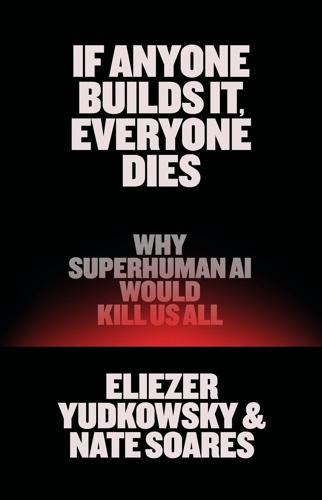
If Anyone Builds It, Everyone Dies: Why Superhuman AI Would Kill Us All
by
Eliezer Yudkowsky
and
Nate Soares
Published 15 Sep 2025
So great was this insistence that even after the reactor in Chernobyl had exploded, senior personnel refused to believe it. The one person who tried to report a correct radioactivity reading was dismissed as “highly emotional.” Managers walked past radioactive hunks of graphite from the explosion that they refused to believe came from an exploded reactor core. In the nearby town of Pripyat where operators’ and managers’ families lived, weddings went on and children played in the fallout because Communist party officials thought it would “spread panic” to order the city evacuated. History is full of other examples of catastrophic risk being minimized and ignored. When the Titanic started sinking, many passengers initially refused to board the lifeboats, convinced that the ship was unsinkable.
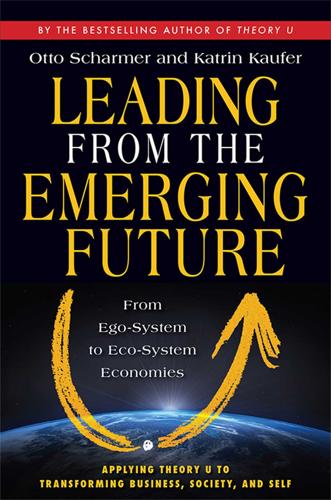
Leading From the Emerging Future: From Ego-System to Eco-System Economies
by
Otto Scharmer
and
Katrin Kaufer
Published 14 Apr 2013
What is the lever that allows us to shift from one state to the other? What can we do to move from madness to mindfulness? Let us look at a concrete example. On April 26, 1986, an accident happened at reactor number four of the Chernobyl nuclear power plant in Ukraine. As the worst-case scenario started to unfold, the children and citizens of the city next door, Pripyat, received no warnings. Citizens of the region, Russian and European, were exposed to a cloud of nuclear radiation that first traveled north to Scandinavia and then covered almost all of Europe and its 500 million inhabitants. Not only were Europe’s citizens not warned about the potential threat, even the top Soviet leaders in the Kremlin were in the dark.
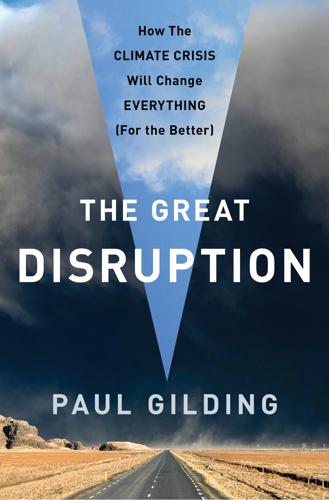
The Great Disruption: Why the Climate Crisis Will Bring on the End of Shopping and the Birth of a New World
by
Paul Gilding
Published 28 Mar 2011
A power surge had ruptured the uranium fuel rods, while a steam explosion created a huge fireball, causing the reactor’s dome-shaped roof to be blown off and the contents to erupt outward. Air was sucked into the shattered reactor, igniting flammable carbon monoxide gas that caused a reactor fire that burned for nine days. The resulting radioactive plume blanketed the nearby city of Pripyat. The cloud moved on to the north and west, contaminating land in neighboring Belarus, then drifted across Eastern Europe and over Scandinavia. While monitoring stations in Scandinavia began reporting abnormally high levels of radioactivity, there was silence from the Soviet authorities. They took three days to acknowledge there had even been an accident.
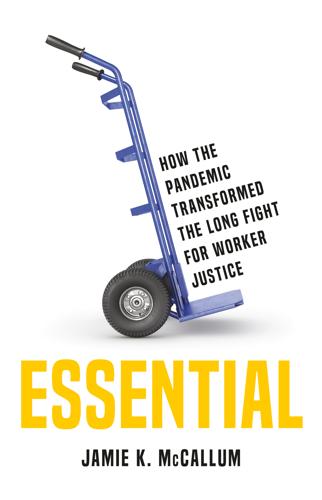
Essential: How the Pandemic Transformed the Long Fight for Worker Justice
by
Jamie K. McCallum
Published 15 Nov 2022
In this context, the history of off-loading risks onto essential workers had even more dire consequences, which may signify a shift into a new era of society suffused with risk. To illuminate this next shift, I’d like to pivot toward conceiving of risk even more broadly, by examining how it has increasingly permeated our everyday lives. And so we move to a place where the word “risk” does not suffice: the poison-drenched air of Pripyat, Ukraine, ground zero of the Chernobyl disaster. The event is still the deadliest nuclear meltdown in history. Over one hundred people died in the fallout, and children of mothers pregnant at the time of the explosion had inflated rates of cancers and other abnormalities. For years prior, Ulrich Beck, a sociologist from the University of Munich, had been writing a book he called Risk Society.

Whole Earth Discipline: An Ecopragmatist Manifesto
by
Stewart Brand
Published 15 Mar 2009
When 330,000 people moved out and wildlife moved in, it became one of Europe’s finest natural preserves. The UN Development Programme has called for ecotourism development there. With the exception of a few well-known (and fading) hot spots, radioactivity has dropped to normal background levels. Already reforested, the ghost town of Pripyat, which once housed 50,000, is a poignant reminder of the cost of design folly—the Chernobyl reactors had no containment structures. The site of the reactor itself is a grim monument which, once the final protective shield is in place, may last as long and as evocatively as Stonehenge. • Several inappropriate Absolute Evils distract rational discussion about nuclear safety.

In Europe
by
Geert Mak
Published 15 Sep 2004
The Germans were absolutely unaware of the existence of the new Soviet T-34 tank, probably the best tank in the world in 1941, until they were confronted with it on the field of battle. The path of the advance had been charted so badly that two German infantry units wandered unexpectedly into the enormous Pripyat swamps and became hopelessly bogged down. Hitler had refused to allow his soldiers to take winter equipment with them; after all, the whole expedition would be over before Christmas. By early December 1941, three quarters of all the German tanks had become mired in the mud, ice and snow. The exhausted soldiers in the front lines could see the flash of the artillery around the Kremlin, but could not move one step closer.
…
The scene of the disaster itself, popularly referred to as ‘the sarcophagus’, looks like a huge concrete coffin built around the ruins of the reactor. The Geiger counter reads 1.05 microroentgens. ‘Not bad,’ Dmytruk says. ‘When the wind is blowing hard we sometimes get up to 1.5. Then you can hear the sarcophagus creaking and groaning in the distance.’ Fifteen minutes further along lies the Pompeu of the twentieth century. In the 1980s, Pripyat – specially built for the workers at the power plant – was a modern town of about 50,000 inhabitants, mostly young families. It was, by Soviet standards, a model town: lots of greenery, good schools, excellent facilities. Then, on 26 April, 1986, everything suddenly stopped. Hundreds of cars and buses were driven to the central square; all of the city's inhabitants had to leave within the hour and none of them moved back.

City: A Guidebook for the Urban Age
by
P. D. Smith
Published 19 Jun 2012
Unchecked, their powerful roots can rapidly destroy walls and foundations. After an initial spread of plants and shrubs, trees would begin growing in open spaces – first alder (which fixes nitrogen in the soil, important for improving the fertility of impoverished urban ground), then birch and sycamore. Pripyat, in Ukraine, was once a modern Soviet city of about fifty thousand people. But after the Chernobyl nuclear disaster in 1986, it was evacuated and abandoned. Within a decade, the concrete paving stones in the city squares had been broken and lifted up almost a metre by tree roots, ‘as if a giant earthquake had struck’.58 Today, wild animals such as deer and boar move freely around the overgrown city, which has become a modern ghost town.
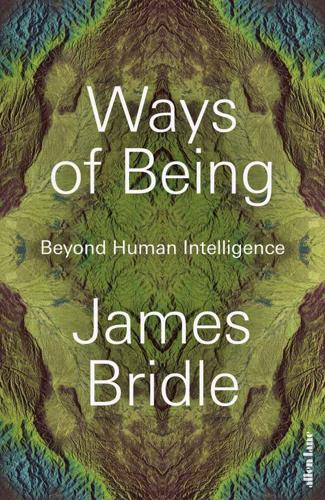
Ways of Being: Beyond Human Intelligence
by
James Bridle
Published 6 Apr 2022
For the European Green Belt, see https://www.europeangreenbelt.org; and Tony Paterson, ‘From Iron Curtain to Green Belt: How New Life Came to the Death Strip’, The Independent, 17 May 2009; https://www.independent.co.uk/environment/nature/from-iron-curtain-to-green-belt-how-new-life-came-to-the-death-strip-1686294.html. For the Korean DMZ, see Claire Harbage, ‘In Korean DMZ, Wildlife Thrives. Some Conservationists Worry Peace Could Disrupt It’, NPR, 20 April 2019; https://www.npr.org/2019/04/20/710054899/in-korean-dmz-wildlife-thrives-some-conservationists-worry-peace-could-disrupt-i. For the wildlife of Pripyat, see ‘The Chernobyl Exclusion Zone is Arguably a Nature Preserve’, BBC News, April 2016; https://web.archive.org/web/20200315114228/http://www.bbc.com/earth/story/20160421-the-chernobyl-exclusion-zone-is-arguably-a-nature-reserve. 8. For Oslo’s bee highway, see Agence France-Presse, ‘Oslo Creates World’s First “Highway” to Protect Endangered Bees’, The Guardian, 25 June 2015; https://www.theguardian.com/environment/2015/jun/25/oslo-creates-worlds-first-highway-to-protect-endangered-bees; and for the managing association, ByBi, see https://bybi.no/.

Active Measures: The Secret History of Disinformation and Political Warfare
by
Thomas Rid
Part of the government’s goal was simply to raise awareness among the public and the press. But the State Department would not stop there, and would even apply tradecraft to stop disinformation. On April 26, 1986, the Chernobyl Nuclear Power Plant’s reactor number 4 exploded. The disaster, the worst nuclear accident in history, occurred near Pripyat, a town of nearly fifty thousand then part of the Ukrainian Soviet Socialist Republic of the Soviet Union. Just weeks later, with reactor 4 still smoldering, even before its protective concrete sarcophagus had been built, the KGB decided to take advantage of the catastrophe with an exceptionally cold-blooded yet equally instructive active measure.
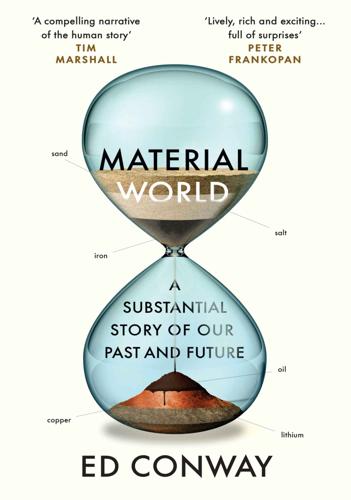
Material World: A Substantial Story of Our Past and Future
by
Ed Conway
Published 15 Jun 2023
Just as there is an oil cartel, OPEC, there is also a potash cartel, with producers aiming, a little like the salt makers of Victorian Cheshire, to control production and prices to keep themselves in the black. When Russia invaded Ukraine in 2022, one consequence was a sudden global shortage of fertiliser, since Russia and its ally Belarus provided roughly a quarter of the world’s potash. There, as here, the sylvite is found among the salt of buried seas: the Pripyat basin in Belarus and the Solikamsk basin in Russia. Over the decades, the miners at Cleveland Potash extracted millions of tonnes of sylvite. In the quest to procure more of the rock they dug deeper, following the veins of sylvite radiating from its main lift shaft: miles under the purple heather of the North York Moors; miles out under the metallic waves of the North Sea.

Nexus: A Brief History of Information Networks From the Stone Age to AI
by
Yuval Noah Harari
Published 9 Sep 2024
For example, when the Chernobyl nuclear reactor exploded on April 26, 1986, Soviet authorities suppressed all news of the disaster. Both Soviet citizens and foreign countries were kept oblivious of the danger, and so took no steps to protect themselves from radiation. When some Soviet officials in Chernobyl and the nearby town of Pripyat requested to immediately evacuate nearby population centers, their superiors’ chief concern was to avoid the spread of alarming news, so they not only forbade evacuation but also cut the phone lines and warned employees in the nuclear facility not to talk about the disaster. Two days after the meltdown Swedish scientists noticed that radiation levels in Sweden, more than twelve hundred kilometers from Chernobyl, were abnormally high.
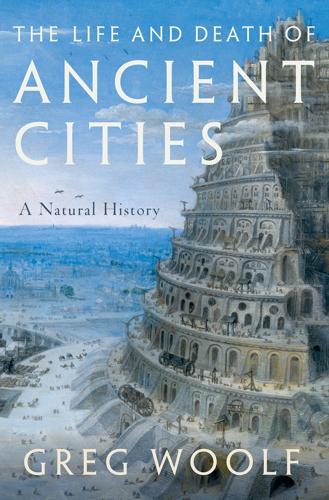
The Life and Death of Ancient Cities: A Natural History
by
Greg Woolf
Published 14 May 2020
During the early Middle Ages many former Roman cities were replanted with gardens. Marble monuments were melted down in lime kilns to provide fertilizer for the fields laid out within the ancient city limits. If you have any doubt about just how quickly the wilderness can reclaim the city then Google Pripyat, the city abandoned in 1986 after the world’s worst peacetime nuclear disaster at Chernobyl Reactor 4. What about resistance to the charms of urbanism? Urban literatures from Gilgamesh on have distinguished the city from its surrounding wilderness, sometimes interposing an intermediate space of cultivated lands.

Lonely Planet Eastern Europe
by
Lonely Planet
,
Mark Baker
,
Tamara Sheward
,
Anita Isalska
,
Hugh McNaughtan
,
Lorna Parkes
,
Greg Bloom
,
Marc Di Duca
,
Peter Dragicevich
,
Tom Masters
,
Leonid Ragozin
,
Tim Richards
and
Simon Richmond
Published 30 Sep 2017
You can only realistically visit as part of a guided tour from Kyiv and you need to book around 10 days in advance to give the authorities time to run security checks. Different people react in diff erent ways to the tour. Whether it be the sight of reactor No 4, or the plight of the ‘liquidators’, the nonchalance of the Soviet authorities or the tragedy of the model Soviet town of Pripyat that leaves the biggest impression, you’re likely to be in a pensive mood by the end of the tour. Expect to pay $150 to $500 per person, depending on the number of people in your party and which tour company you choose. Survival Guide 8Directory A–Z COUNTRY FACTS Area 603,628 sq km Capital Kyiv Country Code 380 Currency Hryvnya (uah) Emergency 112 Language Ukrainian, Russian Money ATMs common; credit cards widely accepted Population 44.6 million Visas Not required for EU, UK, US and Canadian citizens for stays of up to 90 days Accommodation Ukraine has hundreds of hostels with Lviv and Kyiv boasting tens each.

Gorbachev: His Life and Times
by
William Taubman
”125 In Kuibyshev, which Gorbachev visited in early April, he found the textile industry backward, housing scarce, food rationed, one movie theater for 600,000 people, 17,000 children without places in kindergartens, and despite all this, “any manifestation of initiative is punished.”126 In Togliatti, home to the country’s largest car-manufacturing plant, Gorbachev felt as if “a time machine” had taken him backward before March 1985.127 “Keep in mind, Mikhail,” a former Moscow University classmate of his, now the head of a Gorky university philosophy department, wrote him, “Nothing is happening in Gorky—NO-THING!”128 And that was before Chernobyl. AT 1:23 A.M. ON APRIL 26, 1986, nuclear reactor number four at the atomic power station near the town of Pripyat in Ukraine exploded. The explosion and the fire that followed blasted radioactive fallout into the sky, many times more than was released by the atomic bomb that destroyed Hiroshima. The cloud spread over vast areas of the western USSR and eastern and northern Europe. More than 336,000 residents would eventually be evacuated from the area near the plant and resettled.

The Quest: Energy, Security, and the Remaking of the Modern World
by
Daniel Yergin
Published 14 May 2011
As it was being adapted for civilian nuclear power, some Soviet scientists had warned that it was not safe and argued strongly against using it for civilian nuclear power. But the political authorities overruled the scientists. It was much cheaper to build, and it became a mainstay of Soviet nuclear power. Four such RBMK reactors were built at the little village of Pripyat, about 65 miles north of Kiev, then the capital of the Soviet republic of Ukraine. But the plant became better known by the name of the nearby town, Chernobyl, which in Ukrainian means “black stalks,” for a long grass that was common to the region. In the early morning hours of April 26, 1986, operators were carrying out a poorly designed experiment aimed, ironically, at enhancing the safety of the plant.